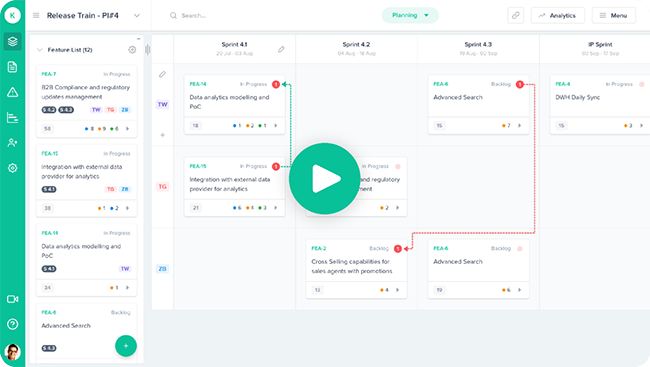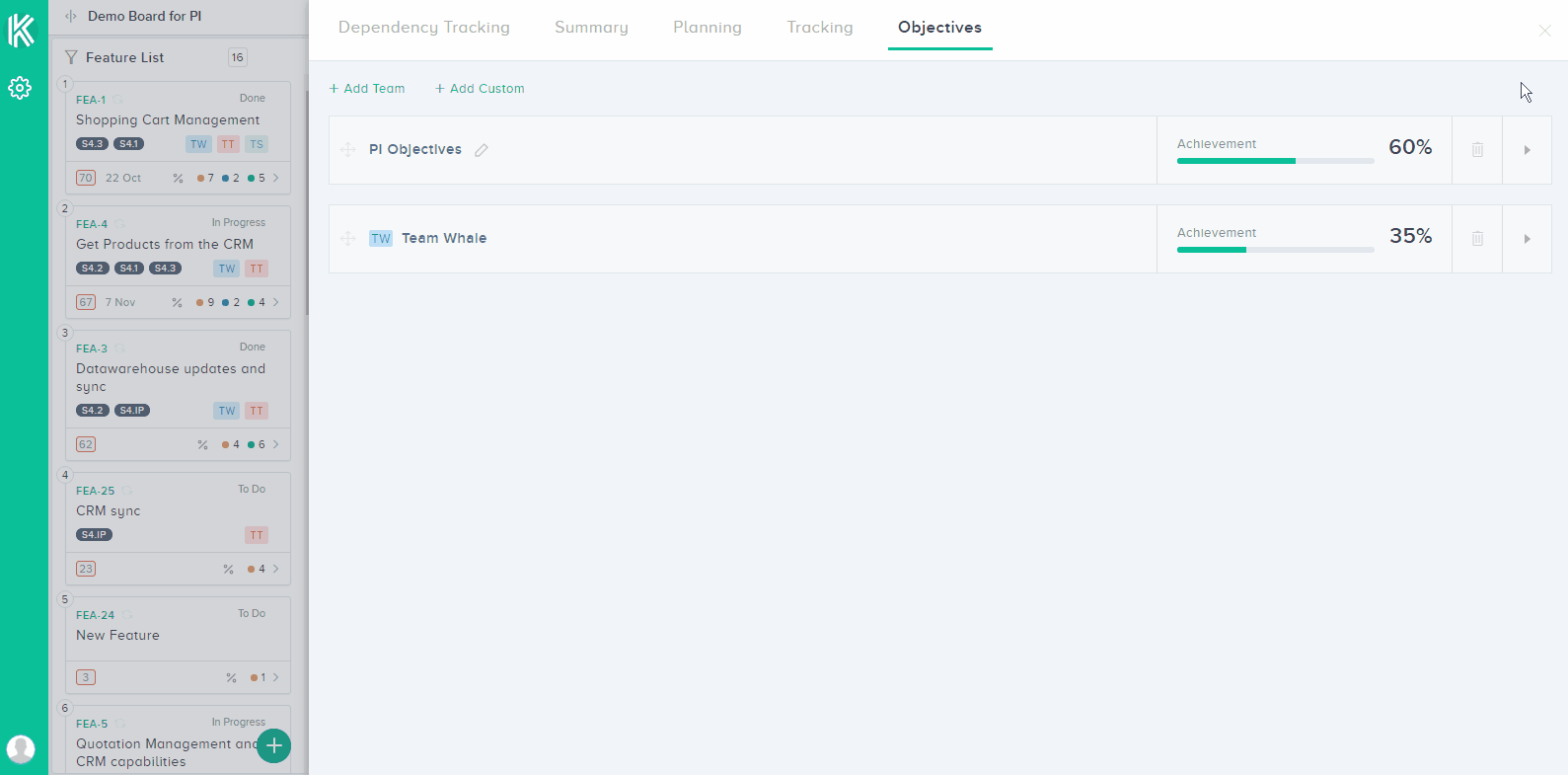Kendis is a digital solution for PI, Tribe and Big room Planning that works on top of Jira and Azure Boards.

PI objectives are a set of directives that are summarized to describe the technical and business elements of a goal that needs to be achieved by an agile team or an agile release train. They serve the basis of planning and aligning the outcomes of a program increment.
PI objectives help to give a clear understanding of what needs to be done. With that being said, the information described in the PI objectives is effectively communicated to business owners or stakeholders, which also educates them on what will be made and in a way that it also validates the team’s grasp on the matter.
A lot of work goes into correctly mapping the objectives out. In this article, we have broken down the process of creating smart PI objectives into three simple steps.
1. Planning your Objectives
Every agile team should have at least one PI objective to cover. But to start formulating these objectives, you need to ask yourself:
- What and why do you want to achieve your goal in the PI?
- How will you achieve what you want in this PI?
To answer all of these questions, you need to have a staunch understanding of the vision and the scope of your project. Teams need to possess an in-depth knowledge and an understanding of the teams, their velocities, competencies, milestones, and its dependencies. This helps in analyzing and doing relevant estimations of the upcoming stories. A time limit should be set for when the objective can be achieved.
The PI objectives should draw focus towards helping the user or the business owner implement a feature. It should be planned in such a way that you get feedback as early as possible so changes can be made in time so that it reduces costs and risks in the future.
2. Creation of your Objectives
Once the planning is done, these PI objectives need to be summarized down into statements that address both the technical and the business aspect of what needs to be done.
The information presented in these statements needs to be specific, clear and concise. A good practice to ensure that the objectives are correct is to apply SMART rules. SMART is abbreviated as Specific and Measurable, Attainable, Relevant and Time-Bound. Their rules are described as follows:
- Specific and Measurable - They need to be supported by reasonable estimation thereby distinctly describing or quantifying what needs to be achieved. Feedback from stakeholders is important to guarantee success.
- Attainable - It should be realistic, free of any ambiguity and should explain the matter as explicitly as possible.
- Relevant - The PI objectives need to be aligned with the vision and the product backlog.
- Time-Bound - Set a time limit to achieve the objective.
An Example of an unclear objective:
Improve Performance.
An Example of a Clear Objective:
Increase page load time by x% so the customers experience less frustration.
3. Assigning Business Value
With the PI objectives made, the final step is to get a business value assigned. This is assigned by business owners during the PI planning session. Business owners assign a value from 1 being the lowest, to 10 being the highest. These values determine the priority or the severity with which the objectives need to be done.
Having PI objectives give direction to your project. It enhances transparency and visibility into the entire project by coordinating everyone to the same mission. Not all of the PI objectives are completed in a program increment.
The objectives that are not met in a program increment, are re-evaluated from where they are either removed or moved up the backlog for the upcoming program increment. This not only reduces excess WIP but also ensures continuous improvement.
About Kendis
You can create custom or team PI objectives in Kendis that will help you in aligning and coordinating all the goals that your agile teams wish to achieve.
Kendis works on top of JIRA and other agile tools, your teams can keep on working with their existing JIRA boards and program level and above is planned and managed at Kendis.
Try out our 10 days free trial or book a demo with our product expert.










